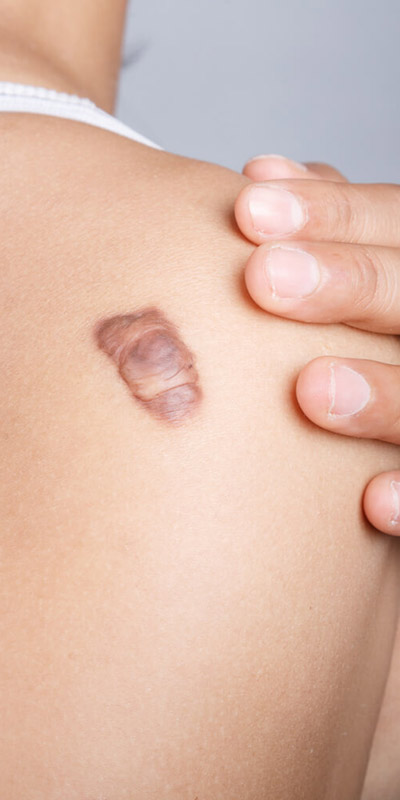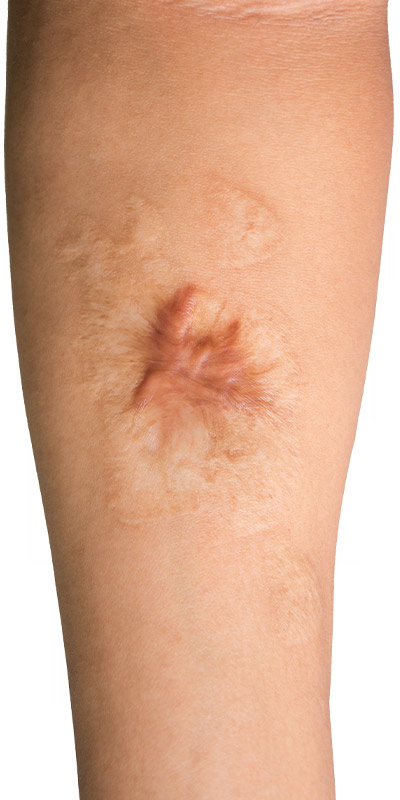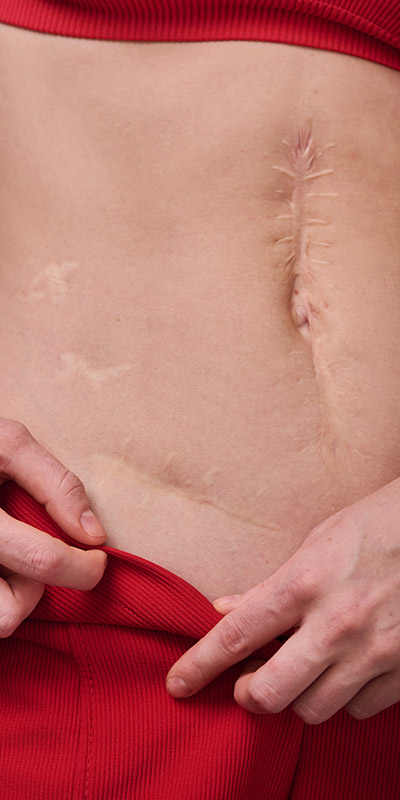A keloid is a hypertrophied, fibrous and benign scar that appears due to different causes during the healing process of a wound. For a keloid to form, it is necessary to have a wound that is in the process of healing.
This wound may be caused by acne, an infection, an operation or a cut that needs to close. Complications occur mainly in people who have a hereditary tendency to form keloid scars.
A keloid starts when the treated or wounded skin secretes, in excess, substances called "growth factor". This causes tumor growth of the scar. At the same time the connective tissue under the epidermis starts to reproduce, to cover the wound.
In a normal person, the tissue just covers the wound, without excess; but keloid indicates that fibrous tissue is produced in excess. Then, it begins to lift the skin to create a fibrous tumor, hard, unsightly and very painful when it is growing.
The keloid must be differentiated from a hypertrophic scar, which is less thick and deformed. Hypertrophic scars usually originate, for example, when the wound was from a wire scratch, the patient had a reaction against the thread of the wound seam or the "lips" of the wound did not stick well.
Meanwhile, a keloid is a large, red tumor that hurts when it forms and later takes on the color of the skin; it is never pre-cancerous, but it is unsightly and it is totally contraindicated to remove it through surgery.
Keloid scars occur secondary to skin injuries such as surgical incisions, traumatic wounds, vaccination sites, burns, chicken pox, acne and sometimes scrapes (minor lacerations).
Most keloids flatten and become less visible over the years and may become irritated due to rubbing from clothing or other forms of friction. Extensive keloids can limit mobility, as well as cause cosmetic changes and affect appearance.


Hypertrophic scars are exaggerated growths of scar tissue that occur at the site of a skin lesion (excessive collagen formation). Although these types of scars increase in size, they do not invade beyond the site of the injury, unlike keloid scars that do invade areas outside the injury.
Hypertrophic scars are more frequent in young women and African-Americans. When multiple or repeated hypertrophic scars occur, it is known as keloidosis.
Hypertrophic scars occur secondary to skin lesions such as surgical incisions, traumatic wounds, vaccination sites, burns, chicken pox, acne and sometimes scrapes (minor lacerations).
Most hypertrophic scars flatten and become less visible over the years and may become irritated due to rubbing from clothing or other forms of friction. Extensive hypertrophic scars can limit mobility, as well as cause cosmetic changes and affect appearance.


